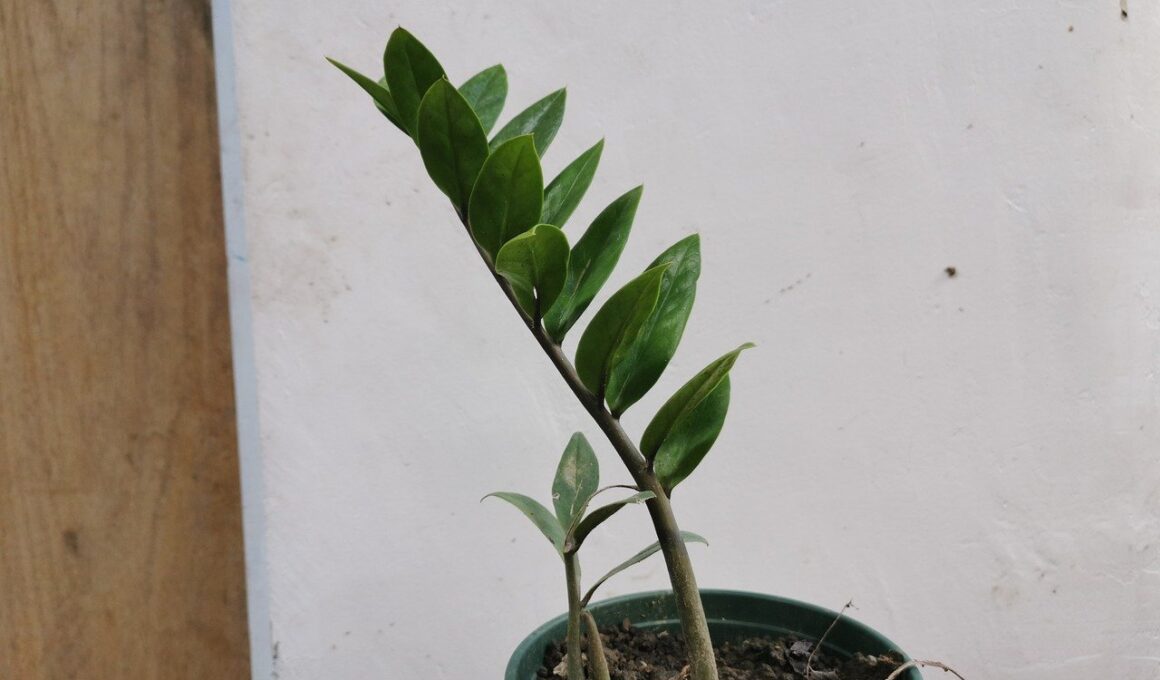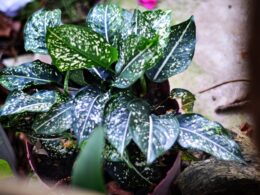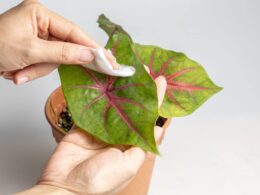What Is a ZZ Plant? Names, Origin, and Characteristics
Before we delve deep into ZZ plant care, let’s introduce the plant. The ZZ plant is a popular houseplant that is known for being low-maintenance. This tropical perennial of the Zamioculcas zamiifolia species is native to Africa. It’s also known by other common names, such as:
- Zanzibar gem;
- fat boy;
- aroid palm;
- emerald palm;
- zuzu plant.
The ZZ plant has long, glossy green leaves that are arranged in a rosette pattern. It’s a slow-growing plant, but can reach up to 4 feet in height over time. The ZZ plant is relatively tolerant of low-light conditions and can even thrive in periods of drought.
ZZ Plant Care – Soil and Fertilization Needs
The ZZ plant grows best in well-drained, sandy soil. The ideal soil pH for a ZZ plant is between 6 and 7.
One of the reasons why ZZ plant care is so easy is that it doesn’t need a lot of fertilizer. In fact, you should only fertilize your ZZ plant once or twice a year. The best time to do it is in the spring and summer when the plant is actively growing.
When fertilizing, use a balanced fertilizer that has a ratio of 10-10-10 or 20-20-20. Be sure to follow the instructions on the fertilizer package, as too much fertilizer can damage the plant.
ZZ Plant Care – Watering Needs
Unlike most plants, ZZ plant care doesn’t involve frequent watering because its rhizomes store water. However, it will still need to be watered every once in a while, especially during the summer months when the weather is hot and dry. The recommended watering frequency is:
- twice a month in the summer, as long as the soil is dry;
- once a month in the winter.
When watering your ZZ plant, be sure to use lukewarm water and allow the soil to dry out completely between waterings. And if you’re ever in doubt, it’s better to err on the side of underwatering rather than overwatering. Too much water can lead to root rot, which can be fatal to the plant.
ZZ Plant Care – Light Needs
ZZ plants are very tolerant of low light conditions. However, they’ll do best in bright indirect light. If you do have a shaded spot in your home that you’d like to add some green to, the ZZ plant is a great option. Just be sure to slowly acclimate it to brighter conditions if you ever want to move it, as too much light all at once can damage the leaves.
ZZ Plant Care – Temperature and Humidity Needs
The ZZ plant is a tropical plant, so it prefers warm temperatures. It should be kept in an area that has a temperature between 60°F and 75°F. If the temperature drops below 60°F, the plant may go into dormancy. If you want to grow these plant outdoors, they’ll do best in USDA hardiness zones 9 and 10.
The ZZ plant is also relatively tolerant of low humidity levels. However, it will appreciate a little extra moisture in the air during the winter months when the air is drier. One way to increase the humidity around your ZZ plant is to use a humidifier or pebble tray.
Do You Need to Prune a ZZ Plant?
Pruning is not necessary when it comes to ZZ plant care. However, if you want to shape your plant or get rid of any damaged leaves, you can do so by carefully trimming them with a sharp knife or a pair of scissors. Just be sure not to cut into the thick, white stem that runs up the center of the plant.
How to Propagate ZZ Plants?
Propagation of ZZ plants is easy. If you want to create new plants, all you need to do is take a stem cutting and root it in water or moist soil.
Cut a piece of the stem that includes at least two leaves. Be sure to make the cut just below a leaf node, which is where new roots will grow from. Then, you can either place the cutting in a glass of water or pot it up in moist soil.
If you’re potting the cutting in soil, be sure to use a well-draining potting mix and water it regularly. The roots should start to grow within a few weeks, and you can transplant the new plant into its own pot once it’s large enough.
How Often Should You Repot ZZ Plants?
The ZZ plant can be a bit fussy when it comes to repotting, so only do so when necessary. A good rule of thumb is to repot every two to three years, or whenever the roots start to become cramped in the current pot. When you do repot, be sure to use a pot that is only one size larger than the current one.
Common Problems with ZZ Plants
The thing about ZZ plant care is that these plants are very resilient and easy to care for. However, there are a few common problems that can occur.
- Leaf drop. This usually happens when the plant is stressed, whether from too much or too little water, low humidity levels, or temperature fluctuations.
- Yellowing leaves. This can be a sign of overwatering, as too much water can lead to root rot.
- Brown leaves. Brown leaves can be caused by a number of different things, including direct sunlight, drafts, or low humidity levels.
If you notice any of these problems with your ZZ plant, take a step back and assess the care it’s receiving.
Ready to Care for a ZZ Plant?
If you’re looking for a low-maintenance plant that is tolerant of neglect, the ZZ plant is a great option. With its glossy green leaves and easy care requirements, the ZZ plant can add a touch of greenery to any room in your home.
Do you have any other ZZ plant care tips? Share them in the comments below!



















